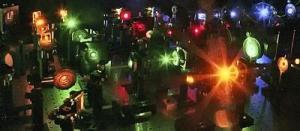Researchers working at Jeff Gelles' Lab at Brandeis University have discovered a way to use lasers that will help them splice pre-messenger RNA molecules, which is a pre-requisite in the development of proteins that supports advanced organisms such as human life. This process is facilitated by spliceosome, which is a cellular micro-machine.
 Brandeis' Microscope
Brandeis' Microscope
Aaron A. Hoskins, who is on a post-doctoral fellowship at Brandeis, has co-authored a paper titled ‘Ordered and Dynamic Assembly of Single Spliceosomes’ that was published in the March 11 issue of Science. The paper details a five-year joint venture of three research laboratories to assess the process of splicing.
Some areas that code for proteins are known as exons, and others that do not code for proteins are known as introns. The introns disturb the exons, making it necessary to remove them while the other pieces need to be spliced together in an effort to develop necessary proteins. The individual yeast units are marked with florescent dyes before keeping them in the microscope. The lasers emit light that illuminates the marked molecules, offering a clear image of the entire splicing process. Friedman stated that the components of the microscope are numerous and have been placed on a platform that resembles a billiards table. Small constructions that resemble miniature towers and glass lenses are spread across the microscope.
The ‘central dogma of molecular biology’ refers to the data transmitted from DNA to RNA to proteins. RNA has the chemical data that guides the cells on what proteins to create, while blood cells use genes that guide the cell on how to create proteins essential for blood cells.
Source: http://www.brandeis.edu/